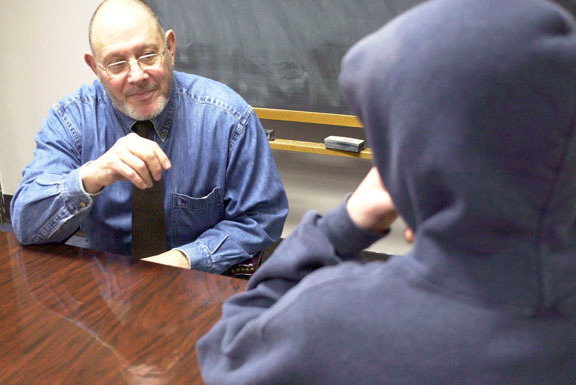Heroin: The road to Hell
Two recovering addicts, both average guys, tell all
Heroin had coursed through Joe's veins for more than 12 months when he arrived at the St. John's University training camp as a freshman attacker on the powerhouse Red Storm lacrosse team.
Joe –– who did not want to be identified by his real name –– had played a variety of sports since he was 6 or 7 –– for as long as he could remember. As a teenager, he excelled in lacrosse, twice earning All-County honors at Massapequa High School, where he was team captain.
Joe was, he said, a solid B-plus student in high school and attended St. John's on an athletic scholarship. But after having been hooked on heroin for a little over a year, he said, he became a "slave" to it. Feeding his habit was his most important priority, not playing the game he loved.
"My job wasn't lacrosse," Joe said. "It was finding heroin and getting high."
This week, the Herald begins a long-term series on what the Nassau County Police Department has labeled an epidemic across the South Shore -- heroin addiction, particularly among young people ages 16 to 29.
At a recent public hearing sponsored by the State Assembly Task Force on Crime in Our Communities, NCPD Commissioner Lawrence Mulvey said the heroin trade has grown so big locally that authorities now consider it their top crime-fighting priority, surpassing even DWI and illegal gun possession, though Mulvey was careful to note that they remain important priorities as well. Some 400 people were arrested for heroin possession or dealing in the county last year. Each arrest represents many others who are using the drug, but have not been caught.
If Joe went more than four hours without a fix, his craving would come calling again, whispering, then screaming in Joe's head. He needed progressively more heroin -- and more and more.
Joe couldn't handle both heroin and lacrosse. So he quit the squad and left the university after two weeks, leaving behind his longtime dream of playing for a Division I team -- and the promise of a bright future.
"I messed that up because of my drug use," said Joe, who is now 24 and clean.
At the time, he told no one, not even his parents, about his drug habit. What lay ahead of him was "the road to hell."
Over time, heroin came to entirely control Joe's body and mind. Without it, he sweated profusely while simultaneously shivering because he felt so cold. Hot flashes might follow. His nose ran. He vomited. Then the diarrhea would come. If he went a day without the drug, he would curl up into a ball as intense pain shot up and down his spine, feeling like he was ready to die.
"It came to a point when I forgot what it's like to be clean," Joe said.
A surge in heroin addiction
The Herald interviewed Joe on a recent Friday in a small conference room in the basement of a red-brick medical building at 30 Hempstead Ave. in Rockville Centre, the home of Confide Inc. The outpatient drug and alcohol counseling center operates with an annual budget of $530,000 -- $430,000 from the state Office of Alcohol and Substance Abuse Services and the rest from fundraising. Staffed by 15 social workers and certified drug counselors, it opened nearly 30 years ago, primarily to treat a wave of heroin addicts after use of the drug first reached epidemic proportions on Long Island in the 1970s.
State Sen. Dean Skelos, a Republican from Rockville Centre, was among the agency's early supporters and has been ever since, said Art Rosenthal, Confide's executive director for the past 10 years.
Rosenthal arranged the interview with Joe and sat in on it. Tom, 23, another heroin addict from Massapequa who graduated from Plainedge High School, joined in. Tom is in treatment at Confide. Joe underwent an intense, 28-day in-patient regimen at the South Oaks Treatment Center in Amityville.
Rosenthal, 65, who has been in the drug-treatment field for four decades in Nassau County and New York City, said he has seen a surge in the number of heroin addicts at his office recently. Joe and Tom agreed to be interviewed so others younger than they might read the stories of two lives gone horribly wrong and decide to take a different path.

 53.0°,
Overcast
53.0°,
Overcast 




